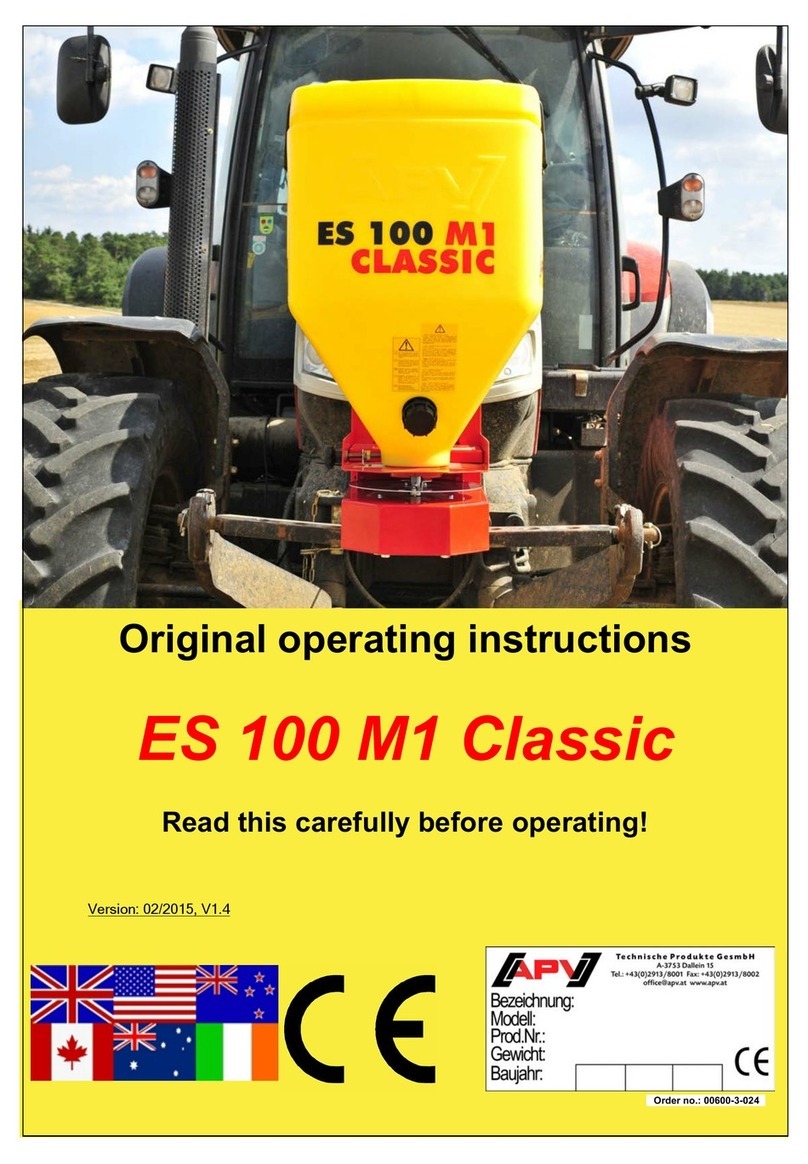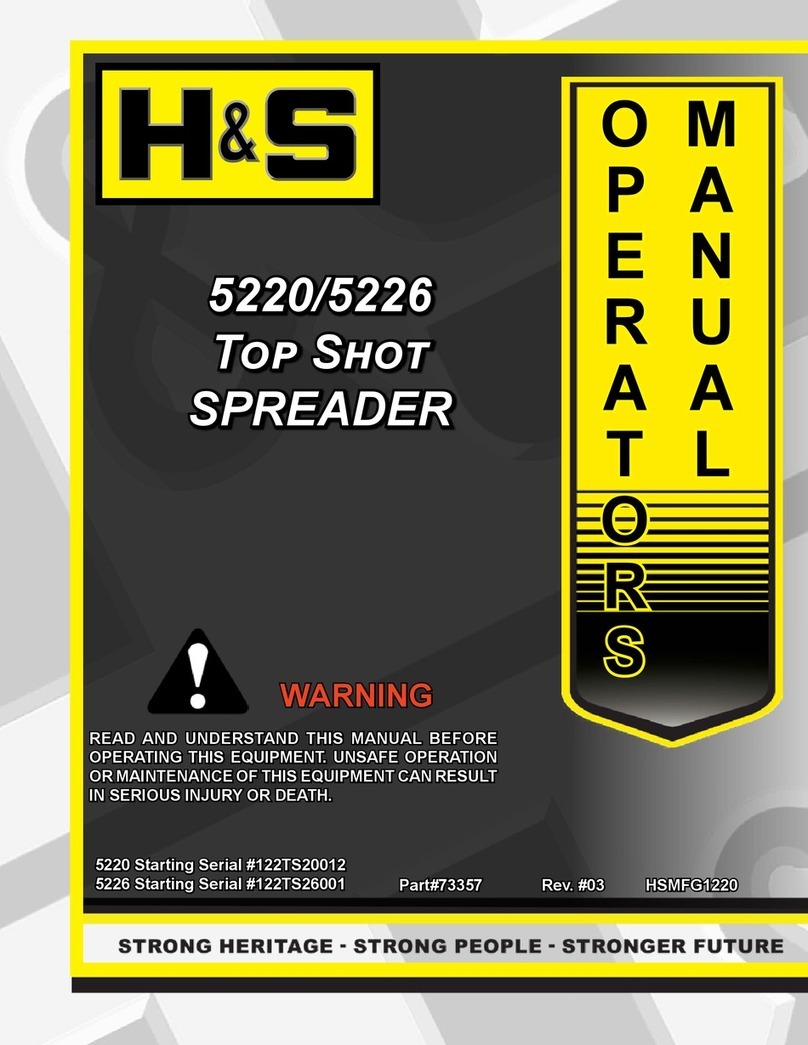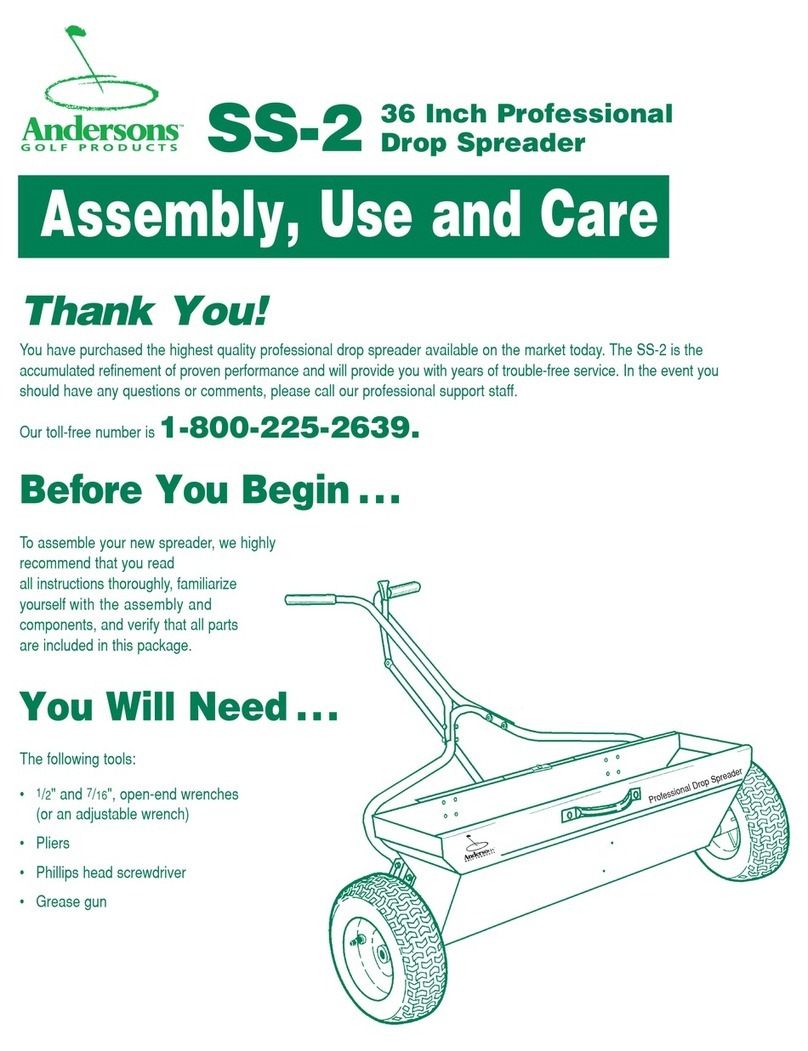
on public roads and highways. Lights and slow moving signs must be clean and visible by overtaking
or oncoming traffic when feeder is transported.
Beware of bystanders, particularly children! Always look around to make sure that it is safe to start
the engine of the towing vehicle or move the unit. This is particularly important with higher noise lev-
els and quiet cabs, as you may not hear people shouting.
NO PASSENGERS ALLOWED - Do not carry passengers anywhere on, or in, the tractor or equip-
ment, except as required for operation.
Keep hands and clothing clear of moving parts.
Do not clean, lubricate or adjust your equipment while it is moving.
When halting operation, even periodically, set the tractor or towing vehicle brakes, disengage the PTO,
shut off the engine and remove the ignition key.
Be especially observant of the operating area and terrain - watch for holes, rocks or other hidden haz-
ards. Always inspect the area prior to operation.
DO NOT operate near the edge of drop-offs or banks.
DO NOT operate on steep slopes as overturn may result.
Operate up and down (not across) intermediate slopes. Avoid sudden starts and stops.
Adopt safe driving practices:
Keep the brake pedals latched together at all times. NEVER USE INDEPENDENT BRAKING
WITH MACHINE IN TOW AS LOSS OF CONTROL AND/OR UPSET OF UNIT CAN RE-
SULT.
Always drive at a safe speed relative to local conditions and ensure that your speed is low enough for an
emergency stop to be safe and secure. Keep speed to a minimum.
Reduce speed prior to turns to avoid the risk of overturning.
Avoid sudden uphill turns on steep slopes.
Always keep the tractor or towing vehicle in gear to provide engine braking when going downhill. Do
not coast.
Do not drink and drive!
Comply with state and local laws governing highway safety and movement of farm machinery on public
roads.
Use approved accessory lighting flags and necessary warning devices to protect operators of other vehi-
cles on the highway during daylight and nighttime transport. Various safety lights and devices are
available from your dealer.
The use of flashing amber lights is acceptable in most localities. However, some localities prohibit their
use. Local laws should be checked for all highway lighting and marking requirements.
When driving the tractor and equipment on the road or highway under 40 kph (20 mph) at night or dur-
ing the day, use flashing amber warning lights and a slow moving vehicle (SMV) identification emblem.
Plan your route to avoid heavy traffic.
Be a safe and courteous driver. Always yield to oncoming traffic in all situations, including narrow bridg-
es, intersections, etc.
Be observant of bridge loading ratings. Do not cross bridges rated lower than the gross weight as which
you are operating.
Watch for obstructions overhead and to the side while transporting.
Always operate equipment in a position to provide maximum visibility at all times. Make allowances for
increased length and weight of the equipment when making turns, stopping the unit, etc.
Pick the levelest possible route when transporting across fields. Avoid the edges of ditches or gullies and
DURING OPERATION
HIGHWAY AND TRANSPORT
OPERATIONS



























